Hello! Today, I am sharing one of my favorite materials I used in the kitchen of the Little Green Cottage renovation. When designing this Cottage kitchen, I wanted a kitchen that had a cozy cottage charm and just a touch of retro edge. For the countertops, I settled on the humble butcher block countertop! I ditched the trendy stone options and embraced a chevron-patterned butcher block’s warmth, affordability, and uniqueness. Let’s talk about why I chose a Chevron Butcher Block Countertop and how they transformed my tiny cottage kitchen into a practical, personality-packed space.
*This post may contain affiliate links.
Budget-Conscious Charm
Let’s face it: renovations can be a budget-buster. So, affordability was a top priority for me when choosing a countertop. While I love concrete, quartz, and granite, they are beautiful options, but their price tags can add thousands to a budget reno.
The price range for Concrete countertops is $75 to $135 per square foot, while quartz can easily be $75 to $155 for a mid-grade product. Granite, a classic choice, can also be pricey, with prices starting at $60 and reaching up to $150 per square foot.
Enter butcher block: my budget-friendly hero. With prices ranging from a mere $35 to $100 per square foot, depending on the wood species and thickness (the chevron patterns run more), it offered the warmth and beauty I craved without breaking the bank. The chevron pattern added additional character. We found our Chevron Butcher Block at Lowes, but you can also find it at other retailers. If you don’t see it in stock, ask. It may be a special order. Note: I have also found it listed as a Herringbone pattern if they struggle to look the item up.
What makes butcher block even more affordable is the easy DIY INSTALLATION!

DIY-ing Your Butcher Block.
Here are a few quick tips for installing your butcher block counters.
- Prep Your Space: Clear the area and ensure the cabinets are level and sturdy. Measure and mark the countertop’s placement on the cabinets.
- Cutting and Seaming: If your countertop requires cuts or seams, use a circular saw or router for clean lines. Apply wood glue and clamp the pieces together for a seamless finish.
- Securing the Countertop: Use construction adhesive or L-brackets (we used both) to secure the butcher block to the cabinets. Screw or bolt through designated holes for extra stability.
- Finishing Touches: Apply mineral oil or butcher block conditioner for a protective seal. Caulk the seams and around the sink to prevent leaks.
Customizing Your Chevron Butcher Block.
One of my favorite things about butcher block is that you can customize the look.
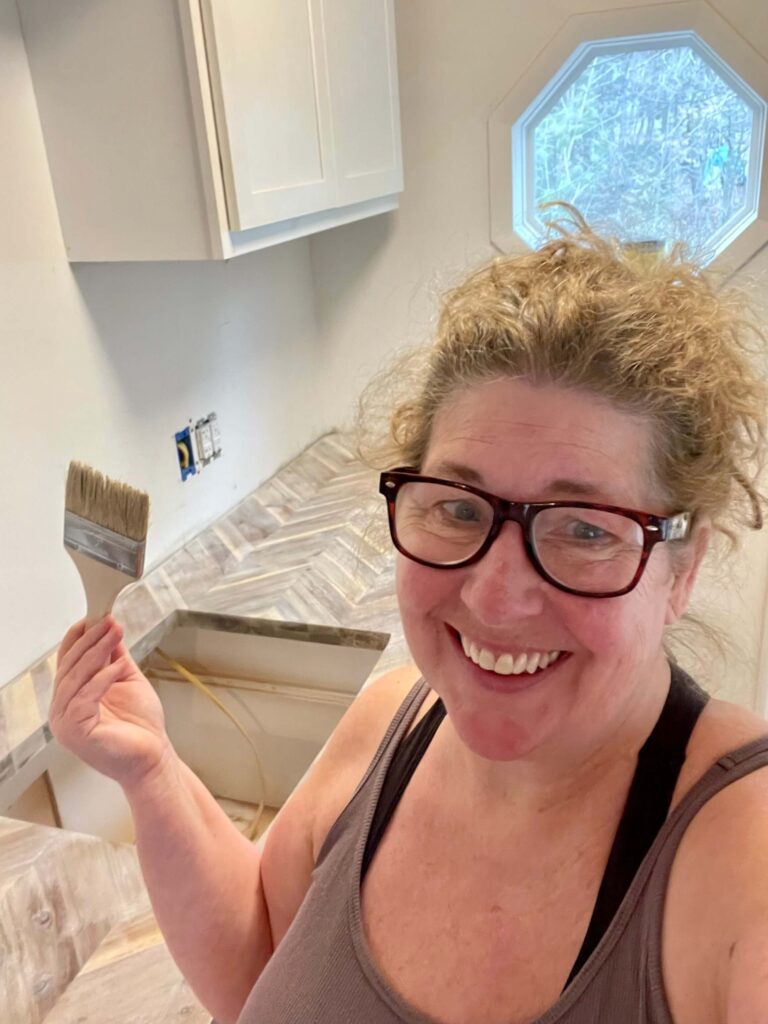
You will find that butcher block can be incredibly versatile. Unlike other materials, butcher blocks can be sanded down and refinished if you don’t love your first attempt. Are you craving a rustic farmhouse vibe? Leave the raw wood and let the natural wood tones shine, highlighting the chevron’s unique pattern and grain. Do you prefer a modern twist? Embrace the darker side with a rich walnut stain, adding depth and drama to your kitchen.
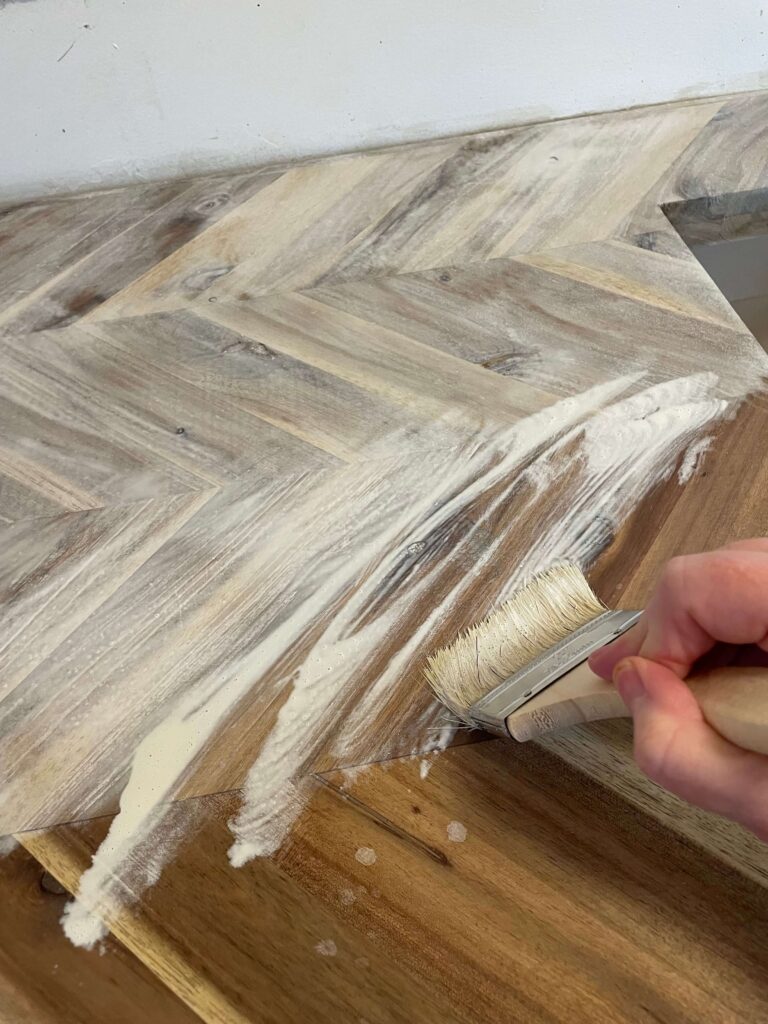
For my Chevron countertop, I used a white wash stain from MinWax to tone down the yellow tone on my butcher block countertops. For the adventurous, you could even consider a two-toned approach, staining the chevron pattern individual pieces for a truly unique statement piece. Remember, your butcher block is your canvas. Embrace it and create something that reflects your personal style.
You can shop many of these items from my Lowes Storefront.

Keeping Your Butcher Block Beautiful: Essential Care Tips
While butcher block is incredibly resilient, it requires a little TLC to keep it looking and performing its best. Once you have your new countertops looking how you want them, you need to seal them. Great food-safe options are mineral oil, beeswax, or a food-grade butcher block oil – they’ll nourish the wood, repel stains, and prevent drying. My favorite is Howard’s Butcher Block Conditioner. Regular oiling is key, especially initially, to create a protective barrier against spills and bacteria. It is not a lot of work and is well worth the time.
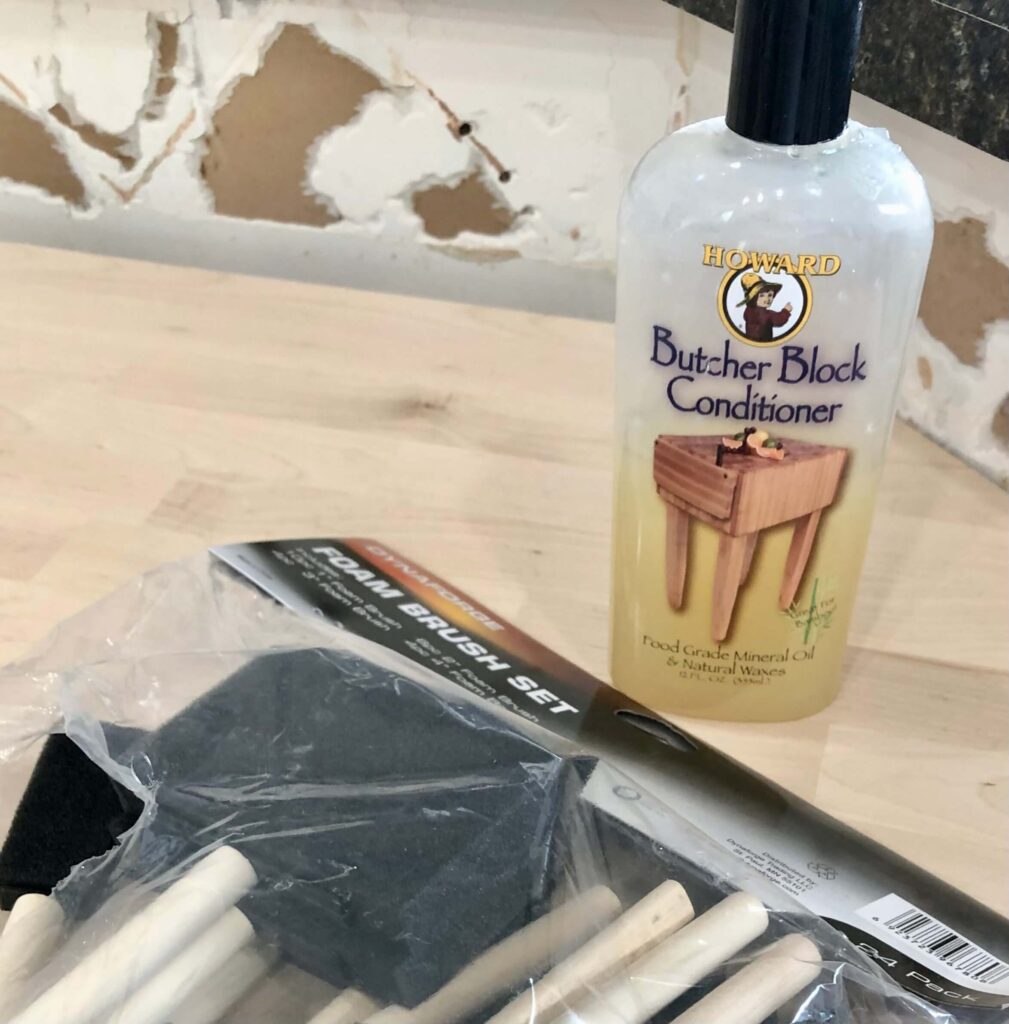
Other Uses for Chevron Butcher Block Countertops
- Laundry Room Shelving
- Desktop
- Open Shelves
- Kitchen backsplash idea
- End table or coffee table
- Dining table

If you dream of a functional kitchen full of character, I urge you to consider butcher block counters. They might surprise you with their endless possibilities and classic appeal. So, grab your tools, embrace your creativity, and get ready to craft a countertop that’s as unique as you are. You won’t regret it!
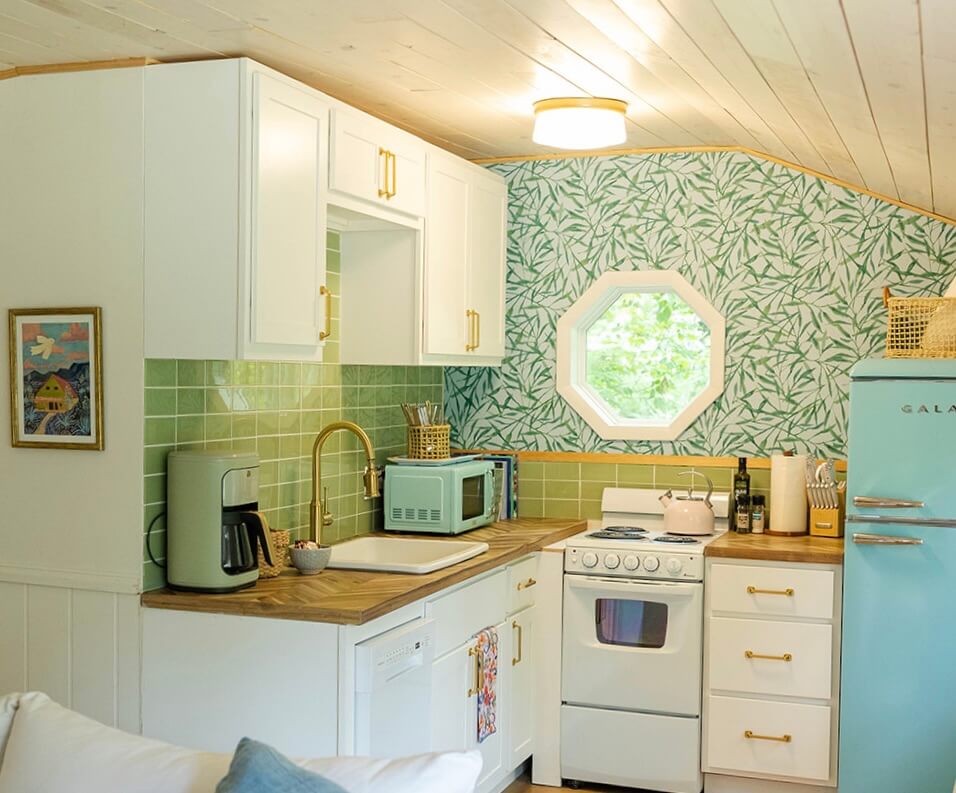
Would you like to shop the kitchen decor featured at the Little Green Cottage?
Until next time,
Libbie
You may also enjoy these posts:
Open Closet Ideas for a Small Bedroom
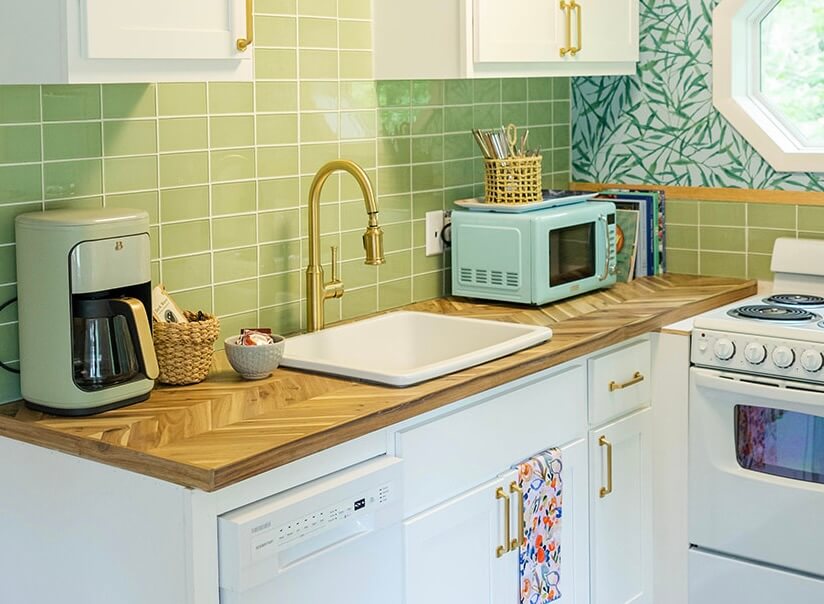
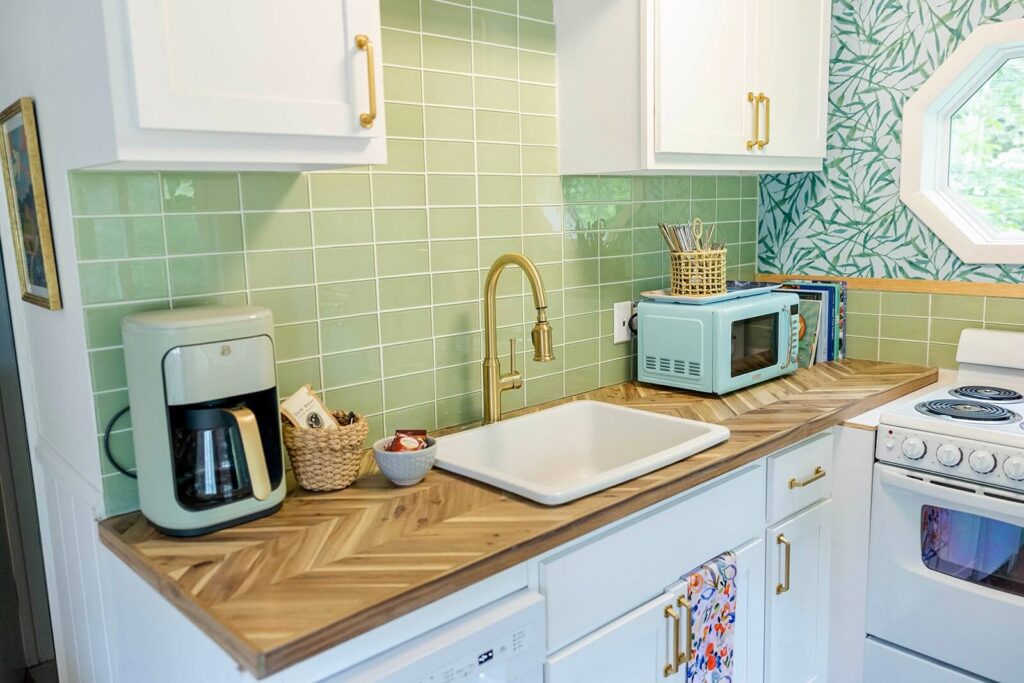

Thank you! Any suggestions on how to keep the cats off the counter while it’s drying? Living in a studio, literally no other room to keep the cat in for a couple of days…
You’ve got me there! If it makes you feel better, I do complete many of my projects with a 120 lb dog laying on my feet 🙂
My grandson just bought his first house and got Chevron butcher block for countertops. Would a Chevron pattern be to busy for his backsplash? Or just stick to basic subway tile?
I would either stack the tile or go basic to let the chevron countertop have it’s own moment.